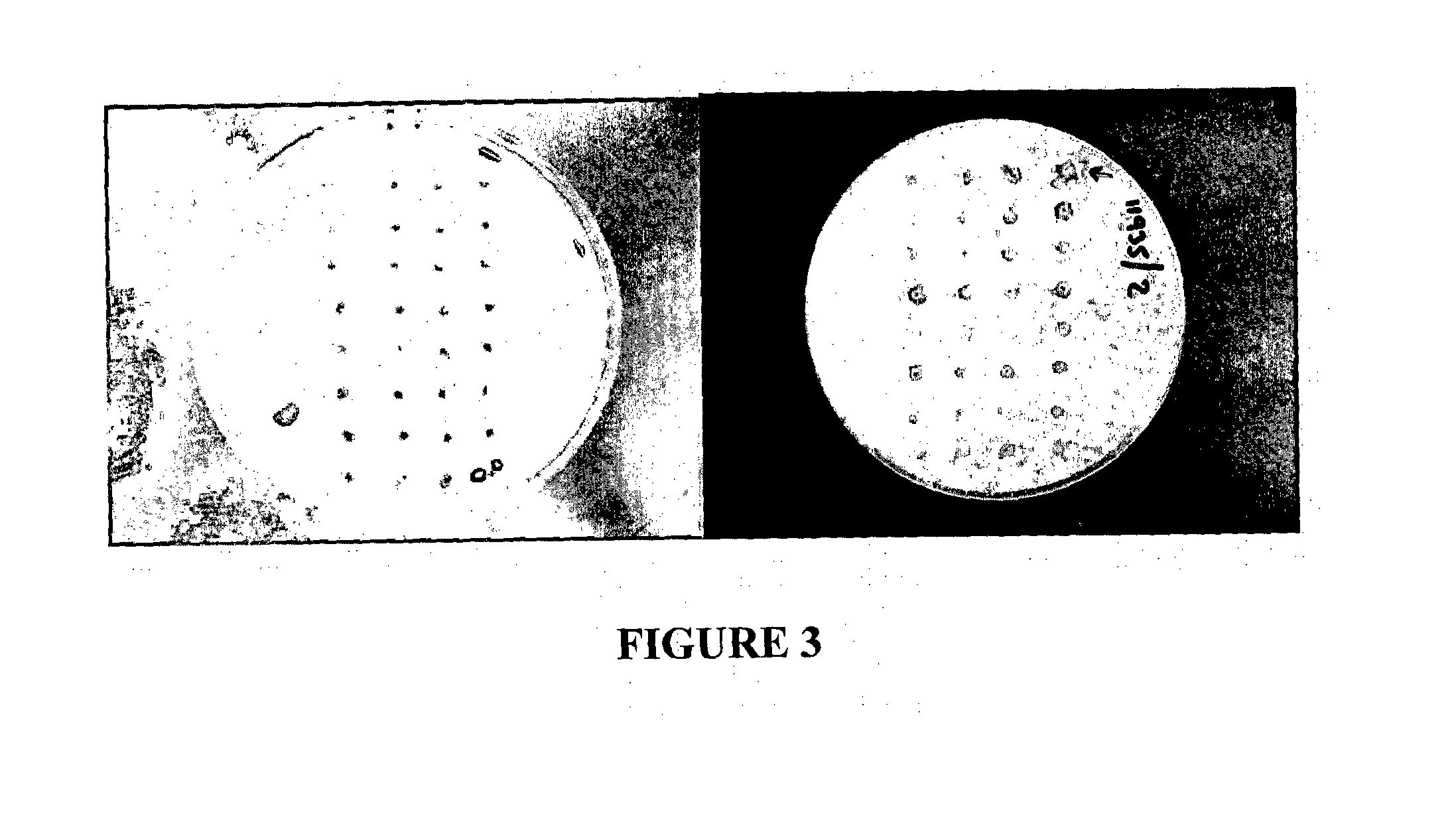Screening methods
a screening method and technology of a screening method, applied in the field of screening methods, can solve the problems of limited commercial success, low screening efficiency, and low success rate of screening methods, and achieve the effects of improving plant growth and survival, and reducing the number of screening methods
- Summary
- Abstract
- Description
- Claims
- Application Information
AI Technical Summary
Benefits of technology
Problems solved by technology
Method used
Image
Examples
example 1
[0258]To identify microorganisms able to improve the growth of legumes, such as clover in the presence of plant parasitic nematodes:
[0259]Step 1. untreated clover seeds are planted in a wide variety of soils in small pots. After a suitable period of growth, say 2 months, the plant are washed out of the soil, and the microorganisms isolated from roots and stems / foliage, either as individual isolates in pure culture, or as mixed populations e.g. as a microbial suspension from an aqueous root crush and / or a stem / foliar crush.
[0260]Step 2. The microorganisms are then added to a plant growth medium into which untreated clover seeds are planted. Alternatively, the microorganism(s) are mixed into a suitable seed coating material e.g. a gel, and coated onto seeds before being planted into a similar plant medium. Alternatively, the seeds are geminated and then exposed to the microorganisms for a short period (usually between 1-24 hours to maximise the chance that the microbes may form an end...
example 2
[0265]To demonstrate an improved ability of grain-producing cereals such as wheat, or rice to grow in saline soils:
[0266]Step 1: preferably, plants growing naturally in a saline environment such as a salt marsh or sand dunes (although this is not necessary), are collected together with some “sand / soil / mud” adherent to the roots, and the microorganisms are isolated from roots and stems / foliage either as individual isolates in pure culture or as mixed populations e.g. as a microbial suspension from an aqueous root crush and / or stem / foliar crush, or both, which may be filtered to remove plant debris.
[0267]Step 2: The microorganisms are added to a plant growth medium containing say ˜100 ppm NaCl (wheat) or ˜50 ppm NaCl (rice) into which untreated wheat or rice seeds are then planted. Alternatively, the microorganism(s) are mixed into a suitable seed coating material e.g. a gel, and coated onto seeds before being planted into a similar plant growth medium. Alternatively, the seeds are ge...
example 3
[0269]For specific applications it may be desirable to conduct an initial selection or targeted enrichment process on the microbial population itself, prior to exposure to the target plant, so that the plants finally selected after successive iterations are more likely to be associated with microorganisms with the desirable properties. For example to increase the chance of selecting microorganisms able to withstand environmental extremes e.g. application to bare-rooted pine seedlings prior to planting, during and after which the treated pine seedlings may not be treated with care by the foresters and may dry and / or be exposed to extreme heat and sunlight, or where microorganisms may be coated on to seed which is then planted in an arid soil to await the rains. In such cases as these it may be desirable to pre-select the microbial populations for those that are more likely to withstand such conditions. In the example above the preparation of microorganisms might be pasteurised at 60°...
PUM
| Property | Measurement | Unit |
|---|---|---|
| temperature | aaaaa | aaaaa |
| time | aaaaa | aaaaa |
| size | aaaaa | aaaaa |
Abstract
Description
Claims
Application Information
 Login to View More
Login to View More - R&D
- Intellectual Property
- Life Sciences
- Materials
- Tech Scout
- Unparalleled Data Quality
- Higher Quality Content
- 60% Fewer Hallucinations
Browse by: Latest US Patents, China's latest patents, Technical Efficacy Thesaurus, Application Domain, Technology Topic, Popular Technical Reports.
© 2025 PatSnap. All rights reserved.Legal|Privacy policy|Modern Slavery Act Transparency Statement|Sitemap|About US| Contact US: help@patsnap.com


